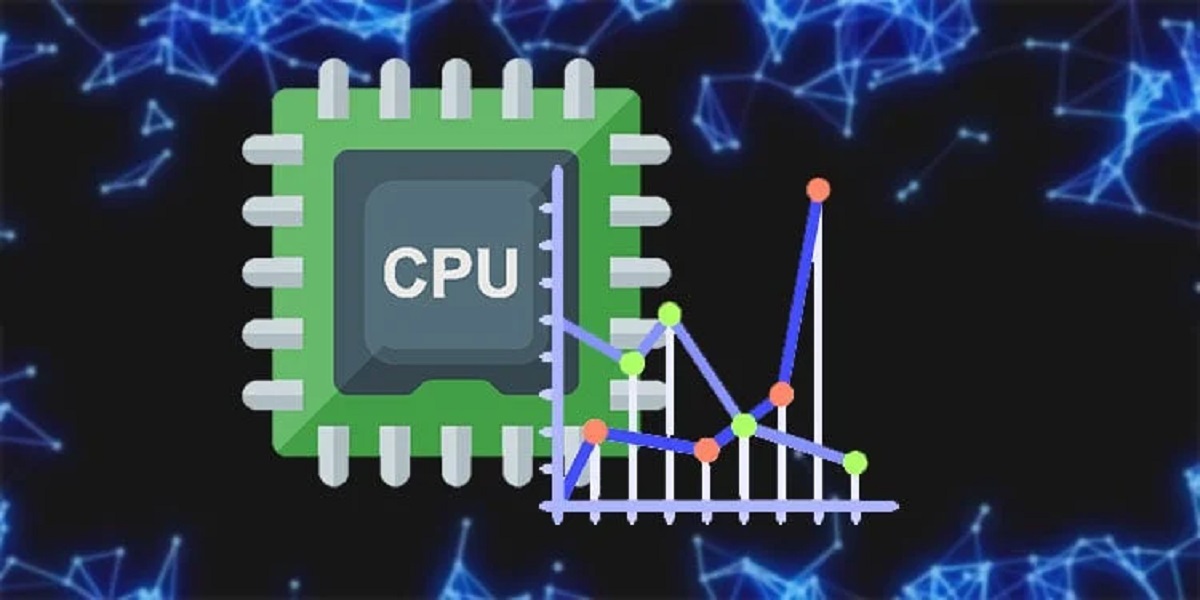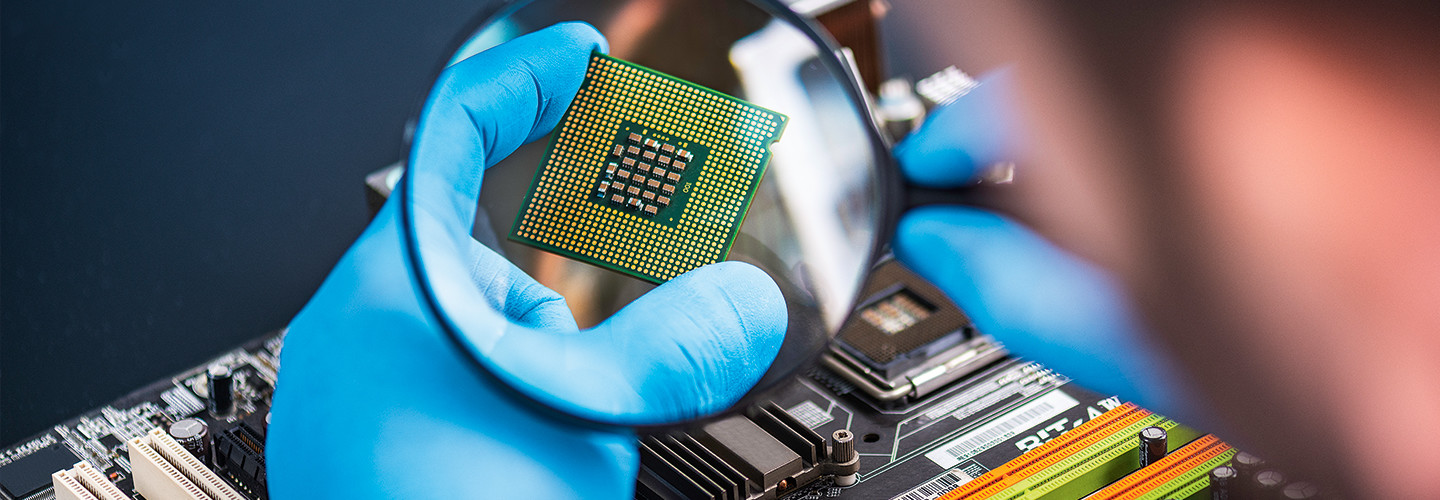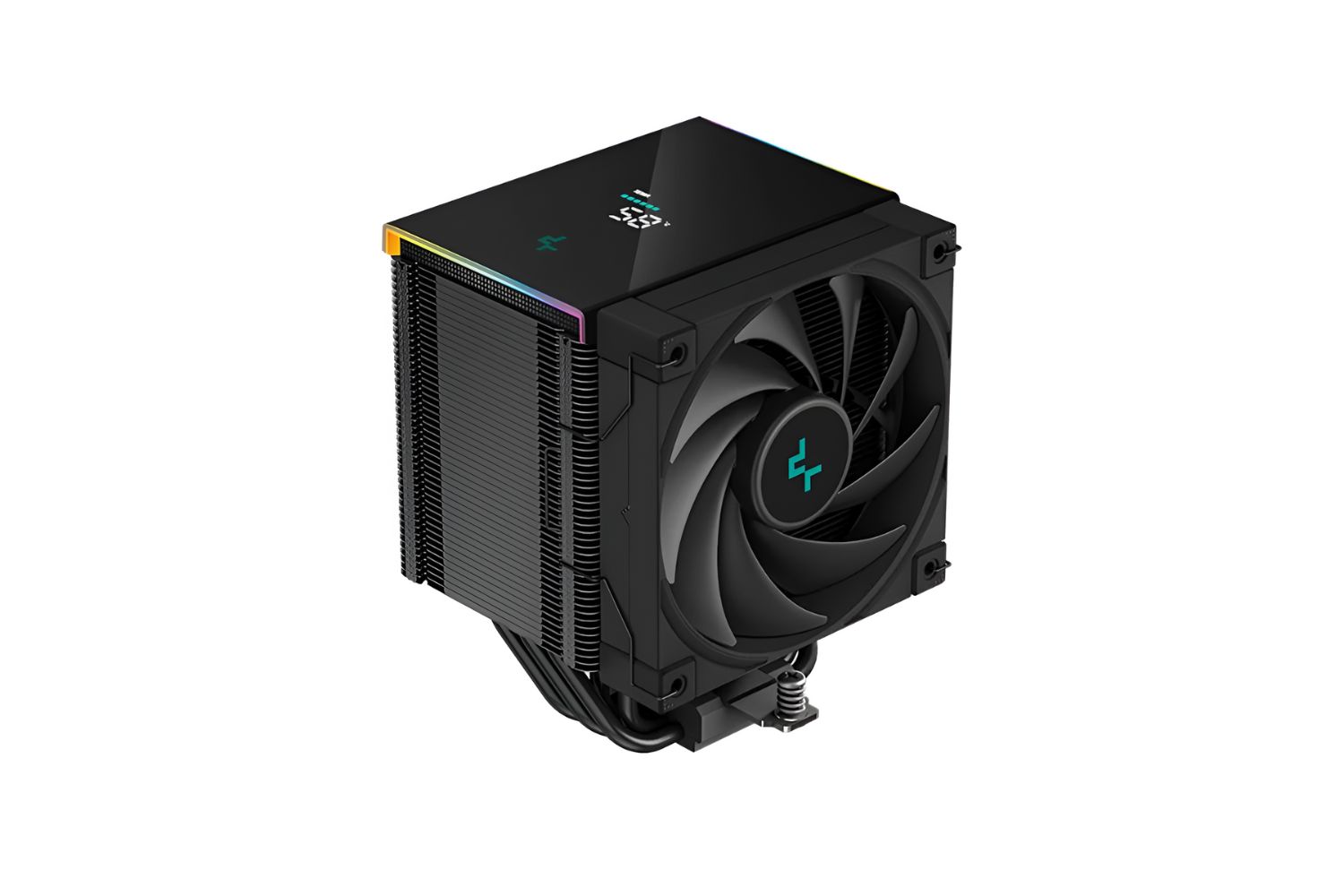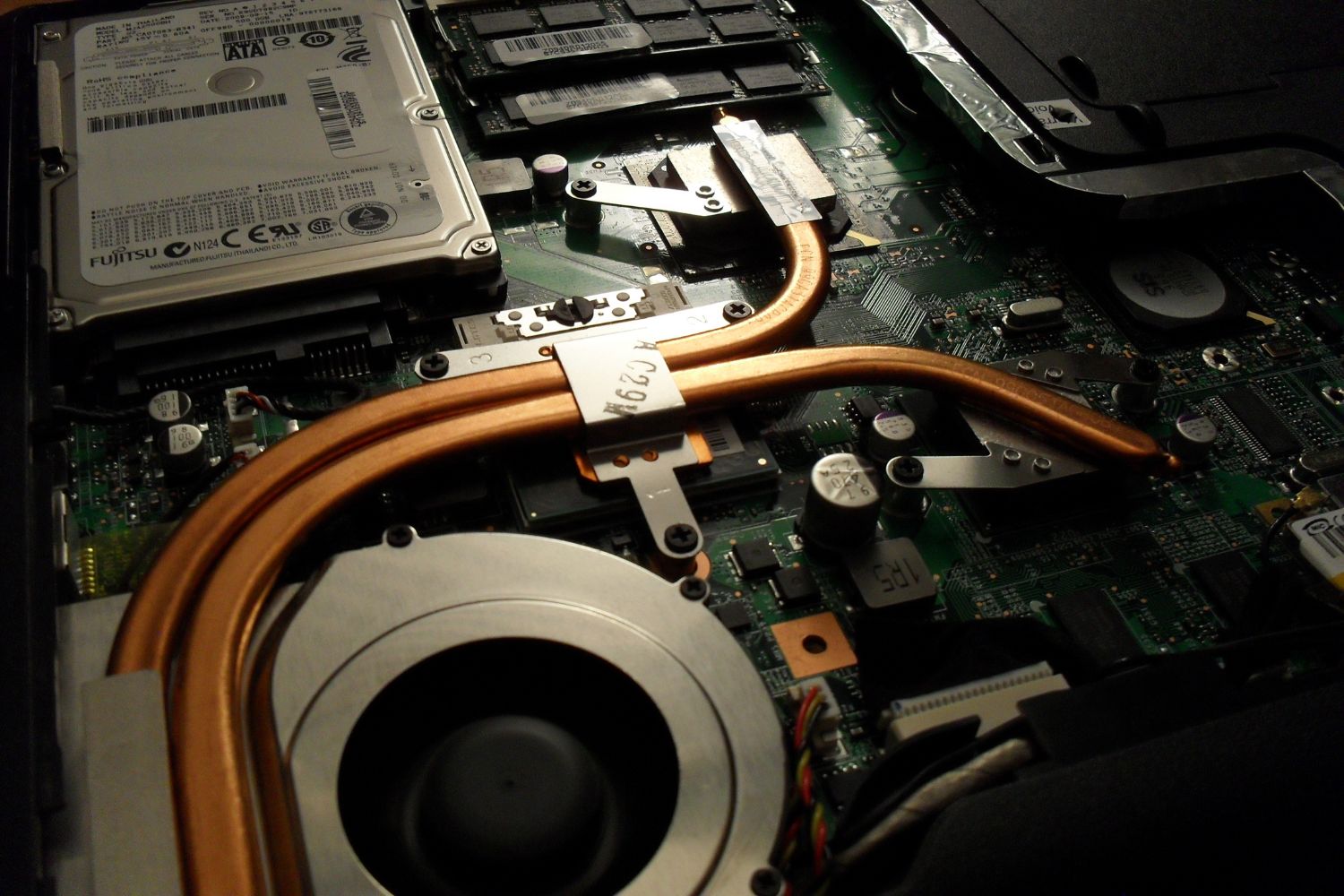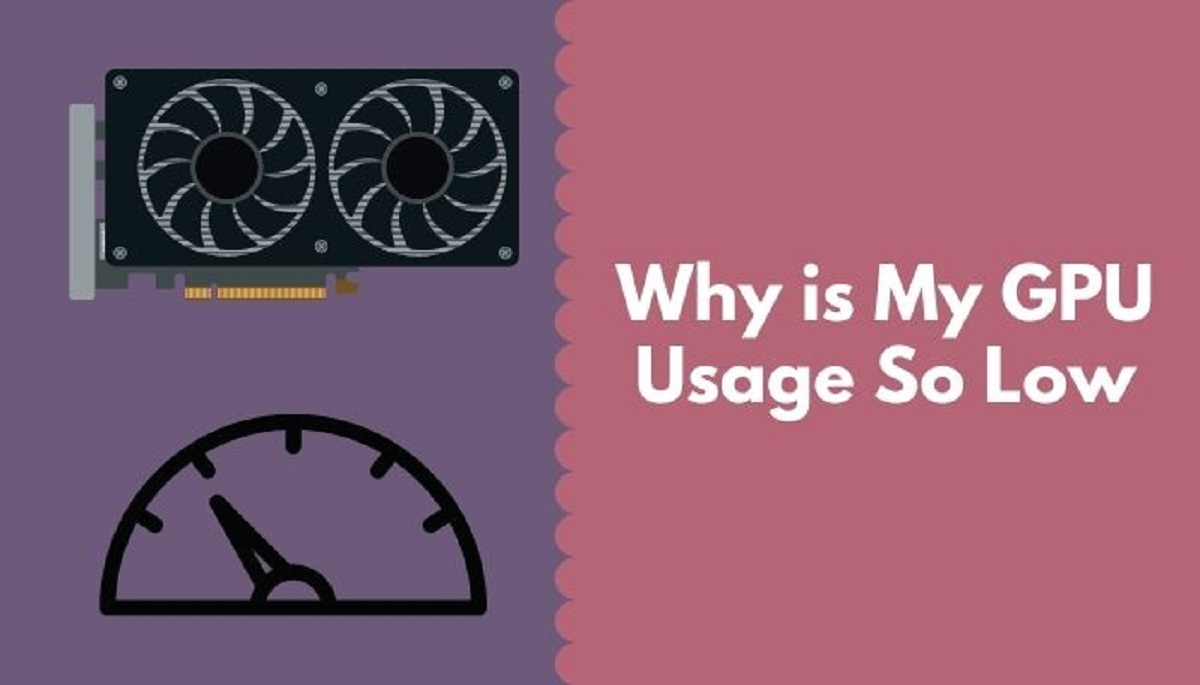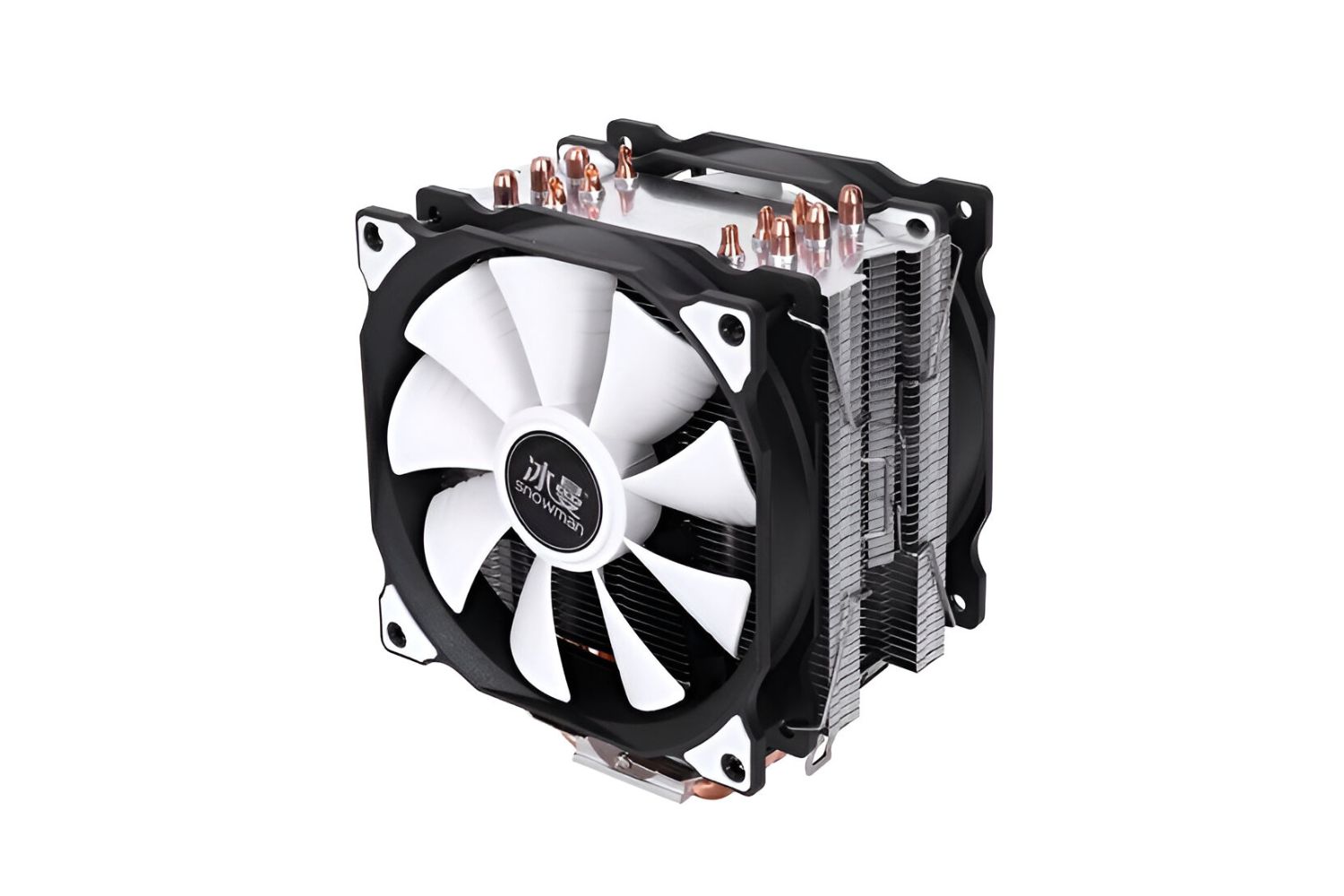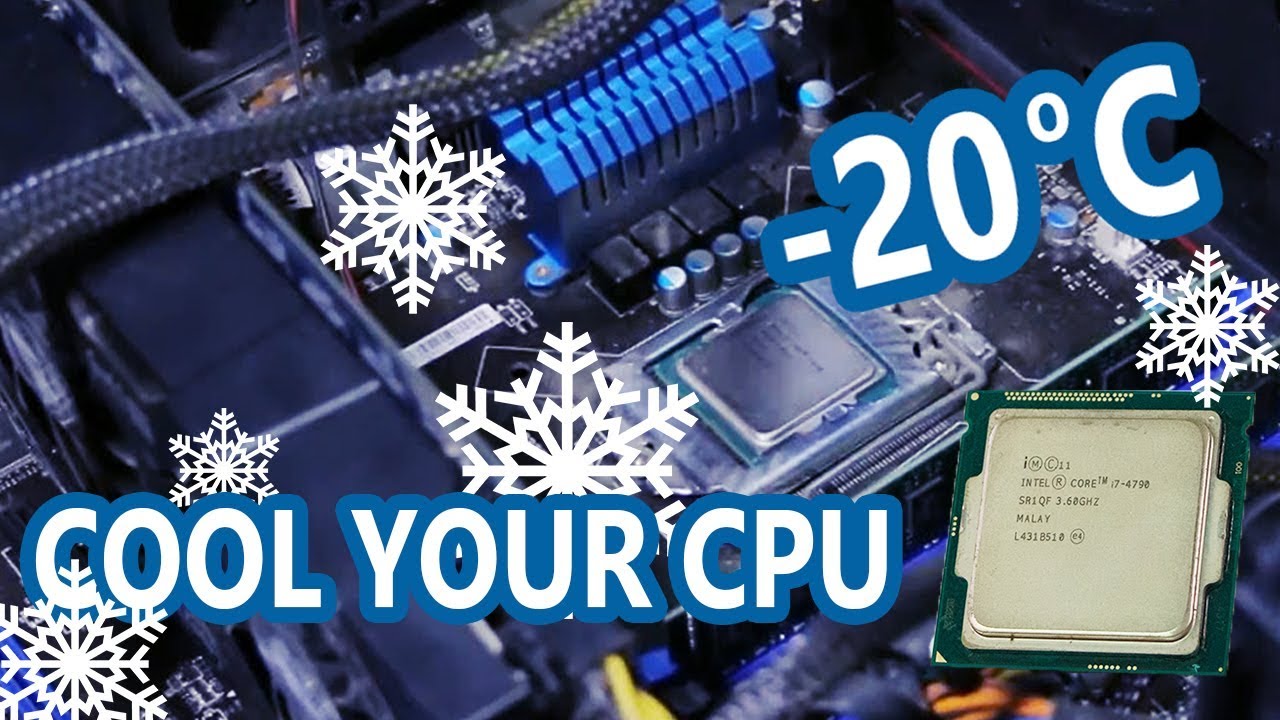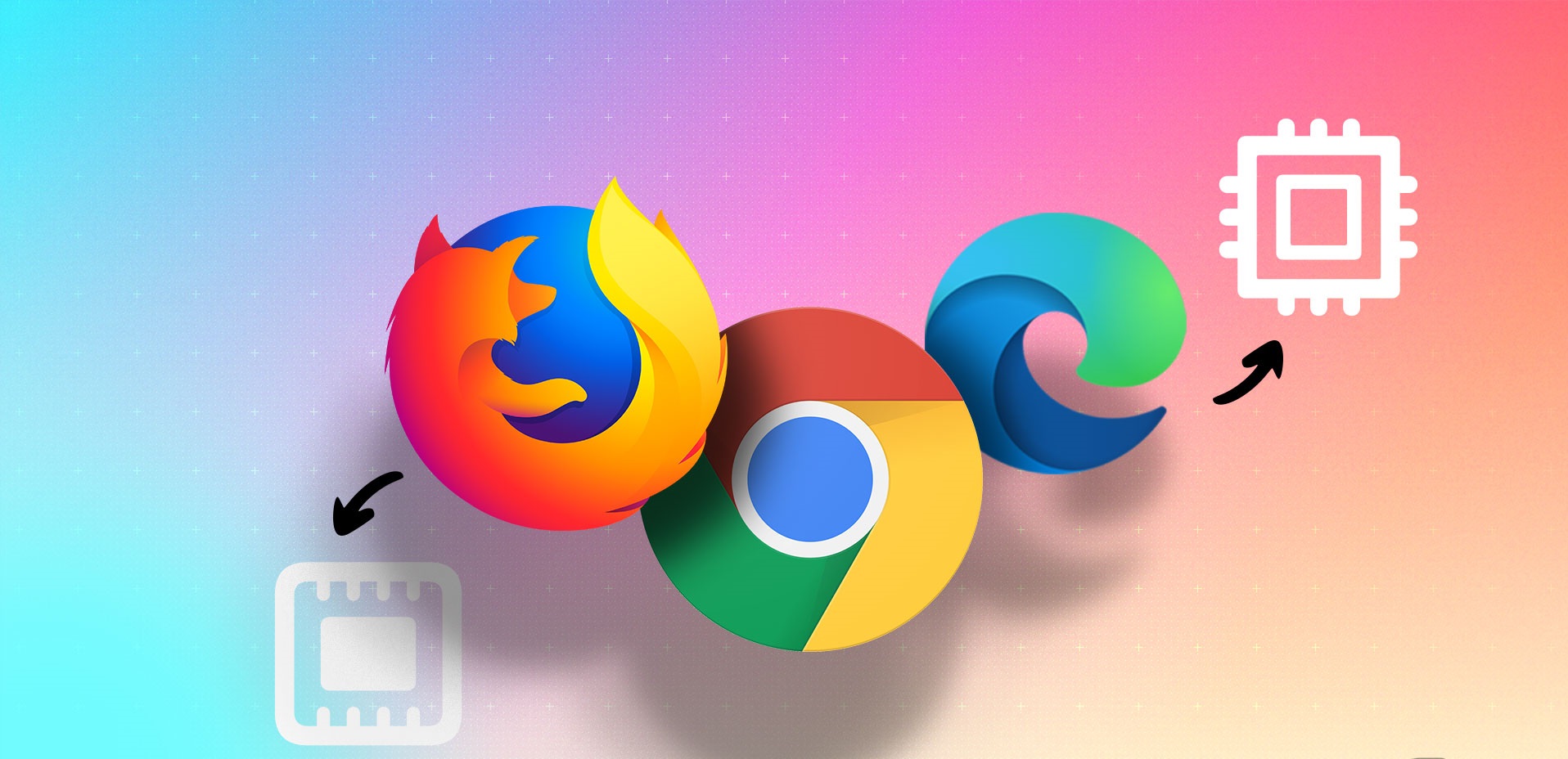Introduction
Understanding CPU utilization is crucial for optimizing system performance and ensuring efficient resource allocation. The CPU (Central Processing Unit) is often referred to as the “brain” of a computer, responsible for executing and processing instructions. CPU utilization refers to the percentage of time the CPU is busy or actively executing tasks.
Low CPU utilization can be concerning as it indicates that the CPU is not operating at its full potential. It may imply that the system is underutilized, leading to wasted resources, or there may be underlying issues causing performance bottlenecks. In this article, we will explore the reasons behind low CPU utilization and how to diagnose and address them.
Optimizing CPU utilization is essential for achieving optimal system performance, particularly in resource-intensive tasks such as running complex software, handling large datasets, or managing server workloads. By identifying the factors contributing to low CPU utilization, you can take appropriate measures to improve system efficiency and enhance overall performance.
What is CPU Utilization?
CPU utilization refers to the percentage of time that the CPU is actively working on processing tasks. It measures the amount of processing power used by the CPU at a given moment. This metric is crucial for understanding how efficiently the CPU is performing and how well resources are being utilized.
The CPU is responsible for executing instructions and performing calculations, making it a critical component of any computing system. When tasks are sent to the CPU, it switches between different processes to complete them. CPU utilization is a measure of how much of its capacity is being utilized during this process.
CPU utilization is usually expressed as a percentage, where 100% indicates that the CPU is fully occupied and is actively working on tasks. However, it is important to note that CPU utilization can fluctuate based on the workload. It can vary from a low utilization during idle or low-demand periods to a high utilization during peak usage or resource-intensive tasks.
CPU utilization can be monitored and tracked to assess system performance, identify bottlenecks, and optimize resource allocation. It helps system administrators and developers understand how effectively the CPU is handling the workload and if there are any inefficiencies or performance issues.
Monitoring CPU utilization is particularly important in scenarios where system responsiveness is critical, such as servers, high-performance computing, or real-time applications. By monitoring CPU utilization, you can detect any potential issues, such as excessive resource usage, underutilization, or system constraints that may impact overall performance.
Why is Low CPU Utilization a Concern?
Low CPU utilization can be a cause for concern as it indicates that the CPU is not operating at its full capacity. While it may seem counterintuitive to worry about low utilization, there are several reasons why it should be addressed:
- Wasted Resources: Low CPU utilization means that the CPU is not being fully utilized, resulting in wasted computing power and resources. This can lead to inefficient resource allocation and a suboptimal use of hardware capabilities.
- Inefficient Workflows: Low CPU utilization may signify that the system is not efficiently utilizing its available resources to complete tasks. It can indicate an imbalance in resource allocation, ineffective scheduling, or inefficient workflow management.
- Underutilization: If the CPU consistently operates at low utilization, it suggests that the system may not be fully leveraging its processing power. This can impact overall system performance and responsiveness, leading to slower execution of tasks.
- Performance Bottlenecks: Low CPU utilization can be an indication of potential bottlenecks or performance issues within the system. It may suggest that the CPU is not the primary bottleneck, and other system components, such as memory, disk I/O, or network bandwidth, are causing the slowdown.
- Limited Scalability: In scenarios where system scalability is important, low CPU utilization can restrict the ability to handle increased workloads. If the CPU is already underutilized during normal operating conditions, the system may not be able to handle additional demands without experiencing performance degradation.
Addressing low CPU utilization is essential for optimizing system performance and resource utilization. By identifying the underlying causes and taking appropriate steps to improve utilization, you can enhance efficiency, reduce waste, and ensure that your system is operating at its full potential.
Common Reasons for Low CPU Utilization
There are several factors that can contribute to low CPU utilization. Understanding these common reasons can help diagnose and address the issue effectively. Here are some possible causes:
1. Insufficient Workload: In some cases, low CPU utilization may be attributed to the absence of demanding tasks. If the system is not running resource-intensive applications or if there are no concurrent processes, the CPU may not be fully utilized.
2. Inefficient Software Design or Implementation: Poorly optimized software or inefficient code can result in low CPU utilization. This can be due to excessive wait times, unnecessary processing, or suboptimal algorithms, leading to underutilization of the CPU resources.
3. Hardware Limitations: Low CPU utilization can also be a result of hardware limitations. If the CPU is outdated or doesn’t have sufficient processing power, it may struggle to handle complex tasks, leading to underutilization.
4. Resource Allocation Issues: Incorrect distribution of system resources can cause low CPU utilization. If resources are disproportionately allocated to other components like disk I/O or memory, the CPU may not receive enough tasks to utilize its full capacity.
5. System Bottlenecks: Low CPU utilization may be an indicator of performance bottlenecks in other system components. If the CPU is waiting for data to be fetched from memory or if there are network delays, it may result in the CPU not being fully utilized.
Identifying the specific reason for low CPU utilization is crucial in order to take appropriate measures to address the issue. By analyzing the system, monitoring CPU usage, and considering factors like workload, software optimization, hardware capabilities, and resource allocation, you can identify the root cause and implement the necessary solutions to improve CPU utilization.
Insufficient Workload
One of the common reasons for low CPU utilization is an insufficient workload. This means that there may be a lack of resource-intensive tasks or concurrent processes to fully utilize the CPU’s processing power. When the system is not running demanding applications or when there are no significant tasks in progress, the CPU may not be utilized to its full potential.
In some cases, low CPU utilization due to an insufficient workload can be considered normal behavior. During idle or low-demand periods, it is expected to see lower CPU utilization as there are fewer active tasks. However, if low CPU utilization persists even during periods of expected high demand or when running resource-intensive applications, it may indicate an underlying issue that needs to be addressed.
To address low CPU utilization caused by an insufficient workload, consider the following:
- Review Application Load: Evaluate the workload patterns and assess if there are expected spikes or high-demand periods that should utilize the CPU more efficiently. If the workload is consistently low, explore options to increase the workload by assigning additional tasks, adjusting scheduling, or optimizing resource allocation.
- Optimize Task Distribution: Ensure that tasks are evenly distributed across the available processing units. This can be achieved by optimizing the task scheduling algorithm or load balancing mechanism. Distributing tasks effectively can help maximize CPU utilization and improve overall system performance.
- Consider Workload Balancing: Analyze the resource requirements of different applications or services running on the system. If some applications are resource-heavy while others are underutilized, consider redistributing resources to balance the workload more evenly and make efficient use of the CPU.
- Explore Additional Use Cases: Identify additional use cases or performance-intensive tasks that can make better use of CPU resources. Introducing parallel computing, data-intensive algorithms, or simulations can help increase the workload and make more efficient use of the CPU’s processing capabilities.
By evaluating the workload, optimizing task distribution, balancing resource allocation, and identifying opportunities to introduce additional resource-intensive tasks, you can address low CPU utilization caused by an insufficient workload. This will help ensure that the CPU is operating at its full capacity and maximize system performance.
Inefficient Software Design or Implementation
An inefficient software design or implementation can contribute to low CPU utilization. When the software is not optimized to make efficient use of available resources or if the code implementation is inefficient, the CPU may not be fully utilized, resulting in lower overall performance.
Here are some factors that can lead to low CPU utilization due to inefficient software design or implementation:
- Excessive Wait Times: Poorly designed software may contain excessive wait times, where the CPU is idle while waiting for external resources or data. These delays can significantly impact CPU utilization and overall system performance.
- Unnecessary Processing: Inefficient code implementation can lead to unnecessary processing, where the CPU expends resources on tasks that are not essential or redundant. This not only wastes CPU cycles but also reduces the available resources for other necessary tasks.
- Suboptimal Algorithms: The choice of algorithms can have a significant impact on CPU utilization. Inefficient or poorly optimized algorithms can result in high computational complexity, leading to lower CPU utilization and slower task execution.
- Poor Resource Management: Inadequate resource management within the software can result in suboptimal resource allocation. This can lead to imbalanced CPU utilization or excessive resource consumption by certain tasks, causing underutilization of the CPU for other processes.
- Ineffective Parallelization: In scenarios where parallel processing is applicable, lack of proper parallelization within the software can limit CPU utilization. Failure to distribute tasks effectively across multiple cores or threads can result in underutilization of available CPU resources.
To address low CPU utilization caused by inefficient software design or implementation, consider the following:
- Code Optimization: Analyze and optimize the codebase to eliminate unnecessary processing, reduce wait times, and improve overall efficiency. This may involve refactoring the code, improving algorithms, and optimizing data structures to make them more CPU-friendly.
- Parallel Processing: Identify opportunities for parallel processing, where tasks can be divided and processed simultaneously across multiple cores or threads. This can help distribute the workload more efficiently and fully utilize the available CPU resources.
- Resource Monitoring: Monitor the resource consumption of the software and identify any excessive utilization or imbalanced resource allocation. Adjust resource allocation as necessary to ensure that CPU resources are appropriately utilized.
- Software Testing: Thoroughly test the software to identify any performance bottlenecks or areas of inefficiency. Use profiling tools to analyze the CPU usage and identify hotspots for optimization.
- Continuous Improvement: Implement a process of continuous improvement to regularly assess and enhance the efficiency of your software. This includes monitoring CPU utilization, analyzing performance metrics, and implementing optimizations based on real-world usage patterns.
By addressing inefficient software design or implementation through code optimization, effective parallelization, resource monitoring, software testing, and a focus on continuous improvement, you can improve CPU utilization and enhance the overall performance of your software.
Hardware Limitations
Low CPU utilization can also be attributed to hardware limitations. If the CPU itself is outdated or lacks sufficient processing power, it may struggle to handle resource-intensive tasks, resulting in lower CPU utilization and reduced system performance.
Here are some factors to consider when addressing low CPU utilization due to hardware limitations:
- Outdated CPU: Over time, newer and more powerful CPUs are released, offering improved performance and efficiency. If you are using an outdated CPU, it may not have the necessary processing power to handle modern applications and workloads efficiently, resulting in low CPU utilization.
- Insufficient Cores or Threads: The number of cores or threads available in the CPU impacts its multitasking capabilities. If the CPU has a limited number of cores or threads, it may struggle to efficiently handle concurrent tasks, leading to underutilization.
- Limited Cache Size: The CPU cache plays a crucial role in memory management and speeding up data access. If the CPU has a small cache size, it may experience frequent cache misses, leading to lower CPU utilization as the CPU waits for data to be fetched from slower memory.
- Thermal Constraints: Overheating issues can cause the CPU to throttle its performance to prevent damage. If the CPU operates under thermal constraints, it may not be able to achieve high utilization consistently, impacting overall system performance.
- Hardware Compatibility: Incompatible or mismatched hardware components can limit CPU performance and overall system efficiency. Ensure that all hardware components are compatible and optimized to work together effectively.
To address low CPU utilization resulting from hardware limitations, consider the following steps:
- Upgrade CPU: If your CPU is outdated or lacks sufficient processing power, consider upgrading to a newer model that can handle the workload more effectively. A higher-performance CPU with a larger number of cores and threads can significantly improve CPU utilization.
- Optimize Cooling: Ensure proper cooling solutions are in place to prevent thermal constraints. Improve airflow, clean dust filters, and consider upgrading heatsinks or fans to better manage CPU temperatures.
- Consider Overclocking: Overclocking the CPU can increase its operating frequency, boosting overall performance and potentially improving CPU utilization. However, this should be done cautiously and with proper knowledge, as it may have implications on system stability and longevity.
- Check for BIOS and Firmware Updates: Keep the system’s BIOS and firmware updated to ensure compatibility with the CPU and to benefit from any performance optimizations and fixes provided by the manufacturer.
- Consult with Professionals: If you suspect hardware limitations are affecting CPU utilization, consult with professionals or technicians who specialize in hardware optimization to get expert advice and recommendations.
By upgrading the CPU, optimizing cooling solutions, considering overclocking (if appropriate), keeping BIOS and firmware updated, and seeking guidance from professionals when needed, you can address low CPU utilization caused by hardware limitations and enhance the overall performance of your system.
Resource Allocation Issues
Resource allocation issues can contribute to low CPU utilization, causing the CPU to be underutilized and ultimately impacting system performance. When resources are not distributed optimally, the CPU may not receive sufficient tasks to fully utilize its processing power.
Here are some common resource allocation issues that can lead to low CPU utilization:
- Imbalanced Resource Allocation: Improper distribution of resources across different system components can result in low CPU utilization. If other components such as memory, disk I/O, or network bandwidth are allocated more resources than necessary, the CPU may not receive enough tasks to utilize its full capacity.
- Resource Sharing: In a shared resource environment, where multiple applications or processes compete for resources, improper resource sharing mechanisms can lead to degraded CPU utilization. If resources are not fairly distributed or managed, certain processes may monopolize CPU time, while others are starved, resulting in overall underutilization.
- Prioritization Issues: In situations where different tasks have varying levels of importance or priority, incorrect prioritization settings can lead to suboptimal CPU utilization. If higher-priority tasks are given excessive resources, lower-priority tasks may not receive enough CPU time, resulting in underutilization of the CPU.
- Inefficient Task Scheduling: Inefficient task scheduling algorithms can lead to irregular distribution of tasks, resulting in periods of high CPU utilization followed by idleness. This can impact overall CPU utilization as tasks may not be evenly distributed over time.
- Static Resource Allocation: Static allocation of resources, where resources are assigned based on pre-defined configurations without considering dynamic workload changes, can lead to inefficient CPU utilization. Adaptive resource allocation, on the other hand, continuously adjusts resource allocation based on workload and demand, optimizing CPU utilization.
To address low CPU utilization caused by resource allocation issues, consider the following steps:
- Monitor Resource Usage: Monitor the resource usage of different system components, including CPU, memory, disk I/O, and network bandwidth. Analyze resource metrics to identify imbalances or inefficiencies that may be impacting CPU utilization.
- Adjust Resource Allocation: Assess the resource allocation settings and ensure that CPU resources are appropriately distributed among different processes or applications. Make adjustments to optimize resource allocation and ensure efficient utilization of the CPU.
- Implement Dynamic Resource Allocation: Implement dynamic resource allocation mechanisms that can adjust resource allocation based on workload fluctuations. This includes techniques such as load balancing, priority queuing, and dynamic resource provisioning.
- Optimize Task Scheduling: Improve task scheduling algorithms to ensure that tasks are distributed evenly and efficiently across the available CPU resources. This can help maximize CPU utilization and improve overall system performance.
- Consider Virtualization: If running virtualized environments, utilize virtualization technologies and tools that allow for better resource management and allocation, ensuring that the CPU and other resources are utilized effectively across different virtual machines.
By monitoring resource usage, adjusting resource allocation, implementing dynamic resource allocation mechanisms, optimizing task scheduling, and considering virtualization techniques, you can address resource allocation issues that contribute to low CPU utilization and improve the overall efficiency of your system.
System Bottlenecks
Low CPU utilization can sometimes be attributed to system bottlenecks, where other components in the system are limiting the CPU’s ability to perform tasks efficiently. These bottlenecks can cause delays and result in the CPU being underutilized, impacting overall system performance.
Here are some common system bottlenecks that can contribute to low CPU utilization:
- Memory Bottlenecks: Limited memory bandwidth or insufficient available memory can cause the CPU to wait for data transfers, resulting in lower CPU utilization. If the CPU is constantly waiting for data from memory, it may not be able to perform tasks efficiently.
- Disk I/O Bottlenecks: Slow disk I/O can affect the CPU’s ability to read or write data, leading to increased idle time and reduced CPU utilization. If the CPU spends a significant amount of time waiting for data from the disk, it will impact overall performance.
- Network Bottlenecks: In systems that heavily rely on network communication, network congestion or limited network bandwidth can create bottlenecks. If the CPU is waiting for data to be transmitted or received over the network, it can result in low CPU utilization.
- Software Dependencies: Some software dependencies or libraries may introduce performance bottlenecks that impact CPU utilization. Inefficient or poorly optimized software components can hinder the CPU’s ability to efficiently execute tasks, resulting in lower overall CPU utilization.
- Interprocess Communication (IPC) Overhead: Excessive IPC overhead, especially in interdependent processes or services, can introduce delays and reduce CPU utilization. If resources are not efficiently shared or if communication mechanisms are not optimized, it can impact overall CPU utilization.
To address low CPU utilization caused by system bottlenecks, consider the following steps:
- Optimize Memory Access: Optimize memory access patterns and ensure the CPU can efficiently retrieve data from memory. This can involve optimizing caching mechanisms, improving data locality, and reducing memory contention.
- Improve Disk I/O Performance: Identify and address any disk I/O bottlenecks that may be impeding CPU performance. This can involve optimizing disk configurations, using faster storage solutions, or implementing caching mechanisms to reduce I/O wait times.
- Enhance Network Infrastructure: Address network bottlenecks by improving network infrastructure, increasing network bandwidth, optimizing network protocols, or implementing distributed caching or data mirroring to minimize data transfer delays.
- Optimize Software Dependencies: Evaluate and optimize software dependencies to ensure they are not introducing unnecessary bottlenecks. This may involve profiling and refactoring the code, utilizing more efficient libraries, or reimplementing critical components for better performance.
- Streamline Interprocess Communication: Minimize the overhead of interprocess communication by using efficient communication mechanisms such as shared memory, message queues, or direct memory access to reduce delays and improve CPU utilization.
By optimizing memory access, improving disk I/O performance, enhancing network infrastructure, optimizing software dependencies, and streamlining interprocess communication, you can address system bottlenecks that contribute to low CPU utilization and improve the overall performance of your system.
How to Diagnose and Address Low CPU Utilization
Diagnosing and addressing low CPU utilization requires a systematic approach to identify the root causes and implement appropriate solutions. Here are some steps you can take to diagnose and address low CPU utilization:
1. Monitor CPU Usage
Begin by monitoring CPU usage over a period of time to understand the typical utilization patterns. Use system monitoring tools to track CPU usage and identify any unusual trends, spikes, or consistently low utilization. This will provide a baseline understanding of the CPU utilization and help identify potential issues.
2. Check for Running Processes
Review the list of running processes and applications to identify any resource-intensive tasks consuming CPU resources. Use task manager tools or command-line utilities to identify processes and their associated CPU utilization. Consider terminating unnecessary or background processes that may be impacting CPU performance.
3. Analyze System Logs
Review system logs to identify any recurring error messages, warnings, or performance-related issues. System logs can provide valuable insights into potential bottlenecks, failures, or misconfigurations that may be affecting CPU utilization. Address any identified issues accordingly.
4. Identify Resource-Intensive Applications or Services
Identify applications or services that are known to be resource-intensive and may contribute to low CPU utilization. Consider optimizing these applications or services to make better use of CPU resources. This can involve code optimization, streamlining resource usage, or implementing more efficient algorithms.
5. Optimize Software or Code
Review the software or code running on the system for any inefficiencies that may impact CPU utilization. Analyze code performance, review algorithms, and optimize resource management to ensure efficient CPU utilization. Consider profiling tools to identify performance bottlenecks and prioritize code optimizations accordingly.
6. Consider Hardware Upgrades or Optimization
If the low CPU utilization persists and hardware limitations are identified as a contributing factor, consider upgrading the hardware components. This can involve upgrading the CPU to a more powerful model, increasing the number of cores or threads, or improving the overall system hardware configuration to better match the workload requirements.
7. Review and Adjust Resource Allocation
Evaluate resource allocation across different system components, including CPU, memory, disk I/O, and network bandwidth. Ensure that resources are balanced and allocated appropriately based on the demands of different tasks. Adjust resource allocation as necessary to optimize CPU utilization and overall system performance.
By following these steps to monitor CPU usage, analyze running processes, review system logs, identify resource-intensive applications, optimize software or code, consider hardware upgrades or optimization, and review resource allocation, you can diagnose and address low CPU utilization effectively. This will help optimize system performance and ensure that the CPU is operating at its full potential.
Monitor CPU Usage
Monitoring CPU usage is a crucial step in diagnosing and addressing low CPU utilization. By observing CPU usage over a period of time, you can gain insights into the typical utilization patterns and identify any abnormalities or consistently low utilization. This step serves as the foundation for understanding the extent of the issue and guiding further investigations.
There are various tools and utilities available to monitor CPU usage. These tools display real-time or historical data, allowing you to track CPU utilization and identify trends or anomalies. Commonly used tools include built-in system monitoring tools, command-line utilities like top or task manager, and third-party monitoring software.
During the monitoring process, pay attention to the following aspects:
- Idle CPU Utilization: Observe the baseline CPU usage during idle or low-demand periods. This will help establish a reference for what constitutes normal utilization when the system is not actively processing tasks.
- Peak CPU Utilization: Identify the maximum CPU usage during peak demand periods. This can help determine if the CPU is being fully utilized during resource-intensive tasks or if it remains underutilized even under heavy loads.
- Anomalies or Spikes: Look for any sudden spikes or unusual fluctuations in CPU usage. These anomalies may indicate intermittent performance issues or specific applications that are causing irregular CPU utilization.
- Comparison with Workload Expectations: Compare the observed CPU utilization with anticipated workload requirements. If the CPU utilization consistently falls below the expected level for a given workload, it indicates a potential issue that needs further investigation.
Monitoring CPU usage provides valuable information for identifying potential bottlenecks, underutilization, or excessive resource consumption that may affect system performance. It serves as a starting point to further investigate the underlying causes of low CPU utilization and guide subsequent actions to address the issue effectively.
Check for Running Processes
When diagnosing low CPU utilization, it is essential to examine the list of running processes and applications on your system. Sometimes, resource-intensive tasks or background processes may be consuming CPU resources, leading to lower overall CPU utilization. By identifying these processes, you can determine if any unnecessary or problematic ones are affecting CPU performance.
To check for running processes, you can use various system monitoring tools or task manager utilities available on your operating system. These tools provide a comprehensive view of the processes currently running and their associated CPU usage.
Here are some steps to follow when checking for running processes:
- Sort processes by CPU usage: Arrange the list of processes based on CPU usage to identify any tasks or applications that consume a significant amount of CPU resources. This will help you identify resource-intensive processes that may be impacting overall CPU utilization.
- Identify unnecessary processes: Look for any processes that are unnecessary or no longer needed. These processes may be running in the background and consuming CPU resources without serving any essential purpose. Consider terminating or disabling these processes to free up CPU resources.
- Investigate high CPU usage: If any processes exhibit consistently high CPU usage, investigate further to determine if they are legitimate or if they may indicate performance issues or malware. Analyze their behavior, resource consumption, and associated metrics to identify any performance or efficiency problems.
- Consider software updates: Some processes may be consuming excessive CPU resources due to software bugs or inefficiencies. Check for available software updates or patches that may resolve these issues and improve CPU utilization.
- Check for background tasks: Look for any background tasks or system services that may be consuming CPU resources. These tasks may be essential for system functionality, but identifying any unnecessary or misconfigured ones can help optimize CPU utilization.
Checking for running processes enables you to identify resource-intensive tasks and evaluate their impact on CPU utilization. By terminating unnecessary processes, optimizing resource allocation, and addressing performance-related issues, you can improve CPU utilization and enhance the overall system performance.
Analyze System Logs
System logs provide valuable insights into the performance and health of your system. Analyzing system logs is an essential step in diagnosing low CPU utilization as they can uncover potential issues, errors, warnings, or performance-related events that may be affecting CPU performance.
Here are some steps to follow when analyzing system logs:
- Identify relevant log files: Determine which log files are relevant to CPU utilization and performance. These may include system logs, application-specific logs, or logs related to system components that can impact CPU performance.
- Look for recurring errors or warnings: Examine the logs for recurring errors, warnings, or anomalies that may point towards CPU-related issues. These could be indications of misconfigurations, compatibility problems, or software faults that impact CPU utilization.
- Note timestamps and context: Pay attention to timestamps and associated events in the log files. Correlate the log entries with CPU utilization patterns or specific activities on the system to identify any relationships between the log events and low CPU utilization.
- Investigate performance-related events: Focus on log entries that directly relate to system performance, CPU usage, or resource management. Look for events indicating high resource consumption, CPU throttling, or other factors that may contribute to low CPU utilization.
- Address identified issues: Once you have identified any issues or errors in the logs, take appropriate action to resolve them. This may involve applying patches or updates, reconfiguring system settings, or troubleshooting specific components or services to address the performance-related issues affecting CPU utilization.
System logs offer a wealth of information that can help identify potential bottlenecks, misconfigurations, or errors that impact CPU utilization. By carefully analyzing the logs and addressing the identified issues, you can optimize your system’s performance, improve CPU utilization, and ensure smooth operation.
Identify Resource-Intensive Applications or Services
When diagnosing low CPU utilization, it is crucial to identify resource-intensive applications or services that may be consuming a significant amount of CPU resources. These resource-intensive processes can reduce overall CPU utilization and impact system performance. By identifying and optimizing these applications or services, you can improve CPU utilization and enhance the overall efficiency of your system.
To identify resource-intensive applications or services, follow these steps:
- Monitor CPU usage per process: Use system monitoring tools or task manager utilities to monitor CPU usage per process. Sort the processes by CPU utilization and identify any processes that consistently consume a high percentage of CPU resources.
- Understand the purpose of each process: Investigate the purpose and functionality of each resource-intensive process. Determine if any of these processes are necessary for your system’s operation or if they can be optimized or replaced.
- Profile application/resource usage: Use profiling tools to analyze resource usage patterns of resource-intensive applications or services. This can provide insights into how CPU resources are being utilized and help identify potential areas for optimization.
- Review task requirements: Evaluate the task requirements of resource-intensive applications or services. Are there any tasks that can be offloaded or distributed to other processes or machines to reduce CPU load?
- Optimize resource-intensive applications or services: Once identified, optimize the resource-intensive applications or services. This can involve code optimization, improving algorithms, reducing unnecessary computations, or using more efficient libraries or frameworks.
- Consider alternative solutions: Evaluate if there are alternative applications or services available with lower CPU resource requirements that can fulfill the same purpose. This may involve researching and testing different solutions to find the most efficient and suitable option.
Identifying and optimizing resource-intensive applications or services is crucial to improving CPU utilization and overall system performance. By monitoring CPU usage, understanding the purpose and requirements of each process, profiling resource usage, reviewing task requirements, optimizing code and algorithms, and considering alternative solutions, you can achieve better CPU utilization and enhance the efficiency of your system.
Optimize Software or Code
Optimizing software or code is an important step in addressing low CPU utilization. Inefficient code implementation, suboptimal algorithms, or poor resource management can all contribute to lower CPU utilization and overall system performance. By optimizing the software or code running on your system, you can improve CPU utilization and enhance system efficiency.
Here are some steps to help optimize software or code for better CPU utilization:
- Profile code performance: Use profiling tools to analyze the performance of your code. Identify sections of code that consume excessive CPU resources or have long execution times. This will help you identify areas that need to be optimized.
- Refactor inefficient code: Review the code and identify areas where it can be refactored for more efficient execution. This may involve simplifying complex algorithms, reducing unnecessary loops, eliminating redundant calculations, or improving variable and data structure usage.
- Optimize resource management: Ensure that resources, such as memory, are efficiently managed within the code. Avoid memory leaks, unnecessary resource allocations, or excessive context switching that can impact CPU utilization.
- Improve algorithm efficiency: Evaluate the algorithms used within your code and consider more efficient alternatives. Look for opportunities to optimize time complexity, reduce the number of computational steps, or utilize more efficient data structures.
- Use hardware acceleration: Leverage hardware acceleration techniques, such as utilizing built-in CPU instructions or leveraging specialized hardware for specific tasks. These techniques can significantly improve the execution speed and overall CPU utilization.
- Optimize I/O operations: Minimize disk I/O or network operations within the code. Consider batch processing, buffering data, or using asynchronous operations to reduce the CPU idle time waiting for data transfers.
- Use efficient libraries or frameworks: Utilize optimized libraries or frameworks that are specifically designed for performance and CPU efficiency. These libraries can provide pre-optimized code or data structures that maximize CPU utilization without sacrificing functionality.
- Continuously test and benchmark: Regularly test and benchmark your optimized code to ensure that the changes made have indeed improved CPU utilization and overall system performance. This will help you measure the effectiveness of your optimizations and identify any areas that may still need improvement.
Optimizing software or code requires careful analysis, knowledge of optimization techniques, and understanding of the specific system requirements. By profiling code performance, refactoring inefficient code, optimizing resource management, improving algorithm efficiency, leveraging hardware acceleration, optimizing I/O operations, using efficient libraries or frameworks, and continuously testing and benchmarking, you can significantly enhance CPU utilization and improve the overall efficiency of your system.
Consider Hardware Upgrades or Optimization
When facing low CPU utilization, one must consider the hardware components being utilized. Outdated or underpowered hardware can limit the CPU’s ability to perform tasks efficiently, ultimately resulting in lower CPU utilization and system performance. Considering hardware upgrades or optimization can help improve CPU utilization and enhance overall system efficiency.
Here are a few steps to consider when evaluating hardware upgrades or optimization:
- Assess CPU capability: Evaluate the capabilities of your current CPU. Determine its processing power, core count, and other specifications to understand its limitations and potential impact on CPU utilization.
- Identify hardware bottlenecks: Analyze the system to identify any hardware components that may act as bottlenecks. Assess the performance of memory, disk I/O, network cards, and other peripherals to see if any are limiting the CPU’s ability to reach full utilization.
- Upgrade the CPU: If your current CPU is outdated or underpowered for the tasks you require, consider upgrading to a more powerful model. Look for a CPU with higher clock speed, more cores, or better cache efficiency to improve CPU utilization.
- Enhance cooling solutions: Overheating can cause the CPU to throttle its performance to prevent damage, resulting in lower CPU utilization. Improve airflow, clean dust filters, and consider upgrading cooling solutions to ensure the CPU operates at an optimal temperature.
- Consider parallel processing capabilities: Evaluate if your workload would benefit from parallel processing. If so, consider upgrading to CPUs that support multiple cores or utilizing multi-socket configurations to enable concurrent execution of tasks, increasing CPU utilization.
- Optimize hardware configuration: Ensure that the hardware components are efficiently configured to work together. Balancing the system’s resources, such as memory allocation and disk I/O, can help ensure that the CPU receives the necessary resources for optimal utilization.
- Consult with professionals: If unsure about hardware upgrades or optimization techniques, consult with professionals or experienced technicians who specialize in hardware optimization. They can provide expert advice tailored to your specific system requirements.
Consideration of hardware upgrades or optimization is essential for improving CPU utilization. By assessing the CPU capabilities, identifying hardware bottlenecks, upgrading the CPU, enhancing cooling solutions, considering parallel processing capabilities, optimizing hardware configuration, and seeking professional advice, you can significantly enhance CPU utilization and achieve better performance for your system.
Review and Adjust Resource Allocation
Reviewing and adjusting resource allocation is a critical step in addressing low CPU utilization. Properly allocating resources across different system components ensures that the CPU receives sufficient tasks to operate at its full potential. By analyzing and optimizing resource allocation, you can enhance CPU utilization and improve overall system performance.
Here are some steps to guide you in reviewing and adjusting resource allocation:
- Evaluate resource allocation settings: Review the current resource allocation settings within your system. This includes CPU, memory, disk I/O, and network bandwidth. Assess whether the current allocation aligns with the demands of various tasks and applications.
- Monitor resource consumption: Utilize monitoring tools to track resource consumption by different processes and applications. Identify any imbalances or instances where CPU resources are not being fully utilized.
- Adjust CPU affinity: Consider adjusting CPU affinity to prioritize the assignment of CPU cores or threads to specific processes or applications. This can help ensure that resource-intensive tasks are allocated enough CPU resources and that the CPU is fully utilized.
- Use task scheduling mechanisms: Utilize task scheduling mechanisms or algorithms to optimize the distribution of tasks across CPU cores or threads. Properly scheduling tasks can help balance the workload and ensure efficient utilization of CPU resources.
- Apply load balancing techniques: Implement load balancing techniques to distribute the workload evenly across multiple CPUs or systems. This can help prevent overloading specific CPUs and ensure that resources are utilized optimally.
- Consider real-time or priority-based scheduling: If certain tasks or applications require real-time or high-priority processing, adjust the scheduling method to allocate CPU resources accordingly. This ensures that critical tasks receive the necessary CPU resources and are processed without delays.
- Use CPU governor settings: Adjust the CPU governor settings to optimize CPU performance based on workload demands. The governor controls the CPU speed and power consumption, allowing you to prioritize performance or power efficiency based on your system’s needs.
- Monitor and adjust in real-time: Continuously monitor resource usage and adjust resource allocation in real-time based on system demands. This flexible allocation ensures that CPU resources are dynamically allocated to tasks that require them the most.
By evaluating resource allocation settings, monitoring resource consumption, adjusting CPU affinity, utilizing task scheduling techniques, applying load balancing, considering real-time or priority-based scheduling, using CPU governor settings, and continuously monitoring and adjusting resource allocation, you can optimize CPU utilization and improve the overall performance of your system.
Conclusion
Addressing low CPU utilization is crucial for optimizing system performance and ensuring efficient resource allocation. By understanding the factors that contribute to low CPU utilization, such as insufficient workload, inefficient software design, hardware limitations, resource allocation issues, and system bottlenecks, you can diagnose and address the issue effectively.
To diagnose low CPU utilization, monitoring CPU usage, checking for running processes, analyzing system logs, identifying resource-intensive applications or services, and optimizing software or code are key steps. These measures help uncover the underlying causes of low CPU utilization and guide further actions.
Additionally, considering hardware upgrades or optimization, reviewing and adjusting resource allocation, and continuously monitoring and optimizing system performance are essential in improving CPU utilization. These steps ensure that the CPU is operating at its full potential and that system resources are allocated efficiently.
In conclusion, by following these steps and implementing the appropriate measures, you can optimize CPU utilization, enhance system performance, and ensure that your system maximizes its computational capabilities. This leads to better resource utilization, improved responsiveness, and an overall more efficient system operation.







